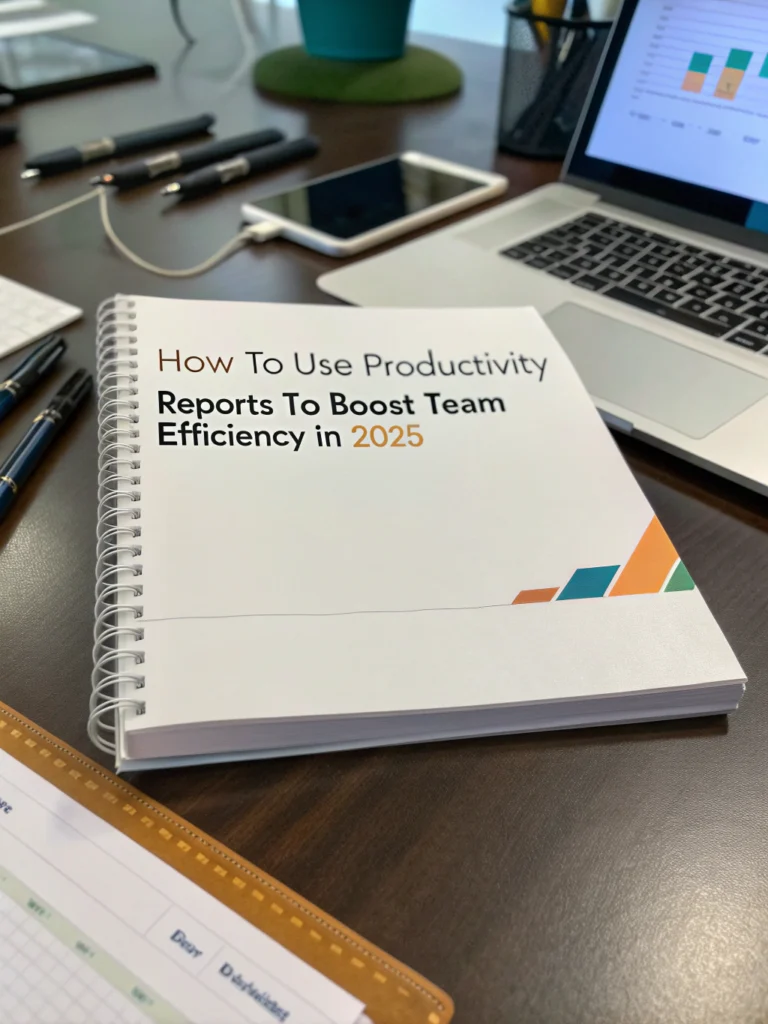How to Use Productivity Reports to Boost Team Efficiency in 2025
In today's fast-paced work environment, maximizing team efficiency is crucial. Employers are looking for reliable ways to improve output and streamline workflows. One of the most effective methods? Utilizing productivity reports. In this article, we’ll break down how you can leverage these reports to significantly boost team productivity in 2025.
What Are Productivity Reports?
Productivity reports are structured documents or tools that measure and evaluate the performance of individuals, teams, or entire organizations. These reports provide insights into how effectively resources are being utilized, allowing managers to make data-informed decisions.
Why are these reports indispensable in the modern workplace? Because they facilitate employee performance tracking and help in identifying bottlenecks in workflows, ultimately aiming to improve workplace efficiency.
Key Components of Effective Productivity Reports
-
Clarity of Metrics: Clearly define what you’re measuring. Are you tracking hours worked, tasks completed, or customer satisfaction? Each metric should contribute towards enhancing overall team efficiency.
-
Data Visualization: Include charts, graphs, or other productivity analysis tools to present data in an easily digestible format. Visual data is often more effective in communicating trends and issues.
-
Frequency of Reporting: Depending on the nature of your business, determine a schedule—weekly, monthly, or quarterly—for generating these reports to keep your team updated and engaged.
-
Actionable Insights: Analyze the data to provide actionable recommendations. It’s not enough to report on what happened; suggest how to improve future outcomes.
-
Employee Feedback: Incorporate feedback from team members to ensure that the reports are relevant and useful. This fosters a culture of continuous improvement.
Boosting Team Efficiency with Productivity Reports
-
Identify Strengths and Weaknesses: Utilize team performance metrics to recognize what your team excels at and where there are opportunities for improvement. This can inform training needs or resource allocation.
-
Set Clear Goals: Use data from previous productivity reports to establish realistic and measurable objectives. Regularly review these goals to keep the team focused.
-
Facilitate Accountability: When team members know their performance is being tracked, they’re more likely to take ownership of their tasks. Employee performance tracking contributes to a culture of accountability.
-
Foster Collaboration: Data from productivity reports can reveal how teams interact. Use this information to encourage stronger collaboration strategies across departments.
-
Implement Changes and Monitor Results: After analyzing the productivity reports, implement the recommended changes. Follow up with subsequent reports to measure progress and refine approaches as necessary.
2025 Tools and Technologies
As we move into 2025, the tools available for tracking and improving productivity are advancing rapidly. Consider adopting some of the latest productivity analysis tools to support your efforts. Tools that integrate with existing project management software can provide real-time insights and help spot trends early.

Conclusion
Productivity reports are invaluable assets in the quest for enhanced team efficiency. By embracing a data-driven approach, businesses can unlock insights that may revolutionize their workflows. When effectively utilized, these reports can significantly boost team productivity and set your organization on a path to success in 2025.
For additional resources to supercharge your efficiency, check out the following eBook bundles:
FAQs
Q: What metrics should I include in a productivity report?
A: Include metrics like actual vs. projected output, hours worked, project completion rates, and employee satisfaction scores.
Q: How often should I review productivity reports?
A: It depends on the nature of your business, but a monthly review is often a good place to start.
Q: What if my productivity reports show a decline in performance?
A: Analyze the data closely to identify root causes, engage team members for feedback, and implement targeted improvements.
Q: Can productivity reports help with employee retention?
A: Yes, by identifying workload issues or burnout, productivity reports can help you create a better work environment, leading to increased employee satisfaction and retention.

